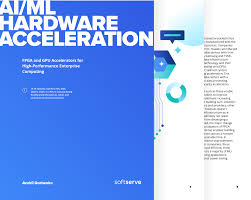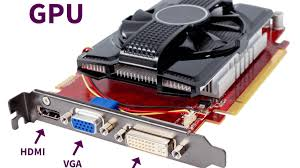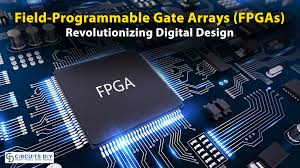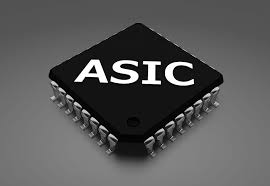Optimizing Machine Learning with Hardware Accelerators: A comprehensive guide to Look at the Future of AI Processing 2024
The demand for machine learning (ML) models is growing exponentially, and with that growth comes the need for specialized hardware capable of accelerating these models. While general-purpose processors (CPUs) can handle a variety of tasks, machine learning models, especially deep learning (DL) networks, require more specific and intensive computational power. This is where hardware accelerators come into play, offering more efficient, scalable, and faster solutions for training and inference in machine learning.
In this blog, we’ll explore the role of hardware accelerators in ML optimization, including the key hardware architectures used to speed up AI computations, the performance metrics that define accelerator efficiency, and the future of quantum computing in AI.
What Are Hardware Accelerators for ML?

Hardware accelerators are specialized processors designed to optimize specific tasks, like the operations involved in training deep neural networks. These accelerators are much more efficient than CPUs in handling parallel computations, which is essential for ML tasks that require massive matrix multiplications, convolution operations, and gradient calculations.
There are various types of hardware accelerators, each optimized for different aspects of machine learning:
- GPUs (Graphics Processing Units): Initially designed for graphics processing, GPUs excel in parallel computations and are the most commonly used hardware for deep learning due to their ability to handle large amounts of data concurrently.
- TPUs (Tensor Processing Units): Developed by Google, TPUs are custom-designed ASICs (Application-Specific Integrated Circuits) specifically for accelerating TensorFlow operations and deep learning models.
- FPGAs (Field-Programmable Gate Arrays): These reconfigurable hardware devices allow developers to tailor the accelerator to the specific needs of an application, offering flexibility but requiring more design effort than GPUs or TPUs.
- ASICs (Application-Specific Integrated Circuits): Unlike FPGAs, ASICs are fixed-function chips designed for specific tasks, offering high energy efficiency and performance for targeted machine learning applications.
Key Accelerator Design Objectives
When designing an AI accelerator, several key objectives must be met to ensure that the hardware is optimized for ML tasks:
- Processing Speed: One of the main goals of AI accelerators is to enable faster training and inference. Faster training helps machine learning experts experiment with different approaches, optimize algorithms, and deploy AI models more quickly. Faster inference, which is especially crucial in real-time applications like autonomous vehicles, ensures that models can provide timely predictions.
- Power Efficiency: With the increasing adoption of edge devices, power efficiency is crucial for making AI-powered solutions more sustainable. Low power consumption ensures that devices can operate for longer periods on limited battery power, which is particularly important for wearable devices and IoT applications.
- Device Size: Many ML accelerators, especially in the mobile and IoT space, require small form factors. Accelerators must therefore balance power efficiency with compact sizes that fit in devices like smartphones, drones, and smart sensors.
- Cost: The cost of an AI accelerator is also a critical factor. The accelerator must deliver high performance while remaining cost-effective for wide-scale deployment, especially in commercial and consumer-grade products.
Types of AI Accelerators

Let’s take a deeper look at some of the most prominent hardware accelerators and their applications:
1. GPUs (Graphics Processing Units)

- NVIDIA GPUs are widely used in deep learning due to their massive parallel processing capabilities. With thousands of smaller processing units, GPUs excel at matrix operations, making them ideal for deep neural network training.
- Performance Metrics: GPUs typically offer floating-point operations per second (FLOPS) as a key metric. With frameworks like CUDA and cuDNN, GPUs are highly optimized for deep learning workloads, offering high throughput and scalability.
2. TPUs (Tensor Processing Units)

- TPUs are application-specific hardware designed by Google for accelerating TensorFlow models. They are optimized for large-scale deep learning tasks and perform better than GPUs in some instances, particularly in large-scale training of neural networks.
- Design Features: TPUs utilize high-bandwidth memory (HBM), providing rapid data access and increasing the throughput of matrix operations crucial for deep learning.
3. FPGAs (Field-Programmable Gate Arrays)

- FPGAs are unique because they allow for customizability. Developers can reconfigure the hardware to optimize it for the specific needs of an application. This flexibility makes them ideal for tasks like model compression or real-time inference, where different algorithms may require different hardware configurations.
- Challenges: While FPGAs offer performance benefits, they require specialized knowledge for development, and their time-to-market can be longer compared to other accelerators.
4. ASICs (Application-Specific Integrated Circuits)

- ASICs are designed for specific ML tasks, and once developed, they offer unmatched performance and energy efficiency. However, they lack the flexibility of FPGAs and are harder to reconfigure once designed.
- Example: Google’s TPUs are a prime example of ASICs used for training and inference in deep learning applications, offering a performance boost over traditional CPUs and GPUs.
Performance Metrics for AI Accelerators
To assess the effectiveness of different accelerators, certain performance metrics are crucial:
- Instructions Per Second (IPS): Measures the speed at which a processor can execute instructions. However, it is less accurate for AI processors as they work with more complex instruction sets.
- Floating Point Operations Per Second (FLOPS): This metric is especially relevant for deep learning tasks, as most AI operations rely on floating-point calculations.
- TOPS (Tera Operations Per Second): Measures throughput and is specifically designed for AI accelerators. It calculates the number of multiply-accumulate operations (MAC), which are critical to machine learning.
- Throughput Per Cost (Throughput/$): Measures the performance per dollar, taking into account not only the computational power but also the cost of the hardware. This is particularly important for scaling AI applications.
Challenges with Hardware Accelerators
While hardware accelerators have significantly boosted the performance of ML models, several challenges remain:
- Energy Efficiency: Although specialized hardware like ASICs and TPUs are more energy-efficient than general-purpose CPUs, the large-scale deployment of these accelerators still requires significant power.
- Scalability: Achieving high performance in distributed environments, such as across multiple GPUs or TPUs, can be difficult. Scalability in terms of both hardware and software is key to optimizing machine learning tasks.
- Cost: High-performance accelerators, especially ASICs and FPGA-based systems, are expensive to develop and deploy. As the demand for AI grows, cost-effective solutions for large-scale applications are essential.
The Future of Hardware Accelerators in Machine Learning
The future of AI accelerators looks promising. With advancements in quantum computing, neuromorphic architectures, and AI wafer chips, we are entering a new era of ML optimization. These new technologies promise to solve some of the current bottlenecks in ML hardware, offering faster computation speeds, greater energy efficiency, and better scalability for AI models.
Conclusion
Hardware accelerators are at the heart of optimizing machine learning models. Whether using GPUs for general-purpose deep learning or specialized TPUs and ASICs for high-performance tasks, these accelerators are transforming the capabilities of machine learning. As the field continues to evolve, the introduction of quantum computing and neuromorphic chips will further revolutionize how AI is developed, trained, and deployed, making machine learning even more powerful and accessible.